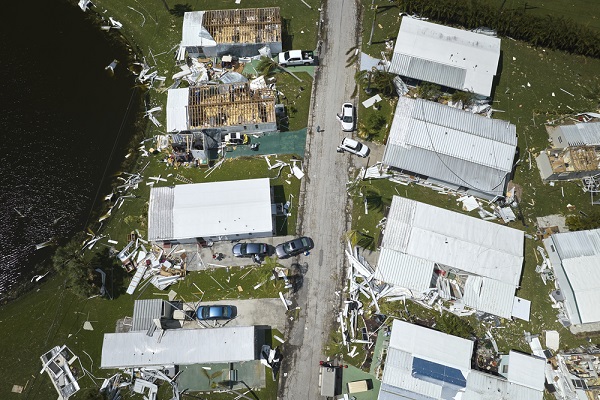Affordable Property Insurance in Southeast Impacted by 2022 Natural Catastrophes

By: Jeremy Burr
Natural disasters have caused an estimated $115 billion in insured losses so far in 2022, according to a December report from Swiss Re Group, which is well above the 10-year average of $81 billion. The Southeast alone was hit by several major disasters, including flooding in Kentucky, a tornado outbreak, Hurricane Ian and Hurricane Nicole. Hurricane Ian is the largest claim event in 2022 to date, with estimated insured losses of $67 billion, according to a report by RMS.
As losses from these and other disasters in the Southeast continue to mount, there is uncertainty about how an already hardening property insurance market and tight reinsurance market are going to react.
The increasing number of catastrophic events in the Southeast over the last decade is driving insurance premiums higher. Homeowners in Florida, for example, pay the highest average annual property insurance premium in the U.S. at $4,231, nearly three times the U.S. average of $1,544, according to the Insurance Information Institute (Triple-I).
Costly natural disasters in Florida are also contributing to the insolvency of property-casualty insurance companies, destabilizing the insurance market and reducing the availability of private property insurance.
As a result, many property owners who can’t find private insurance are turning to state-backed Citizens Property Insurance Corporation for insurance coverage. Known as Florida’s insurer of last resort, the company’s policy count continues to increase, surpassing the 1-million mark in August 2022, according to WFSU News. The growth in policyholders, coupled with a potential onslaught of new business if more insurers leave the market, is raising concerns that the increasing frequency of catastrophic weather events could wipe out Citizens’ reserves to pay claims.
With Jan. 1 reinsurance renewals looming, homeowners and multifamily property owners in Florida and the Southeast are anxious about how natural disasters will further impact insurance availability and rates in their area.
As reinsurers go through the process of renegotiating with insurers for renewing contracts next year, a report by Fitch Ratings projects that reinsurance rates for property-catastrophe business could increase by “well over 10%.” The ratings and research firm attributed this projected increase to high inflation and climate change. The firm also expects “double-digit percentage premium rate rises for property catastrophe cover in 2023 driven by insured losses of about $120 billion in 2022 and the increasing frequency and severity of natural catastrophe claims.”
Prices also are expected to be “most pronounced in the regions worst affected by natural catastrophe events in 2022, including Florida,” Fitch Ratings projected. As a result of elevated natural catastrophe losses, reinsurers likely will decrease available capacity in Florida and other loss-impacted areas of the Southeast, creating a supply-demand imbalance for reinsurance in 2023.
“Hurricane Ian will further complicate the upcoming 1/1 reinsurance renewal season, which was already challenged by supply and demand issues, persistent inflation, increased CAT losses, asset write-downs, and pullback from the insurance-linked securities (ILS) market,” according to Kroll Bond Rating Agency (KBRA).
As natural disasters become more frequent, severe and costly in the Southeast, homeowners and multifamily property owners will face increased challenges in finding affordable coverage amid a rapidly hardening property market. Escalating losses and a lack of investment returns for reinsurance companies could contribute to many raising rates, cutting back on capacity, or withdrawing from the property-casualty market altogether in the region at the turn of the year.
Agents can help mitigate some of their clients’ anxiety related to the market’s reaction with frequent dialogue on rate changes and coverage options. Connecting with clients to instill confidence and develop strong strategic plans, including multiple creative program structure designs for the upcoming renewal period, can help them feel in control and better navigate this challenging property insurance landscape.
Jeremy Burr is a managing partner with Insurance Office of America, specializing in multifamily real estate industry.










